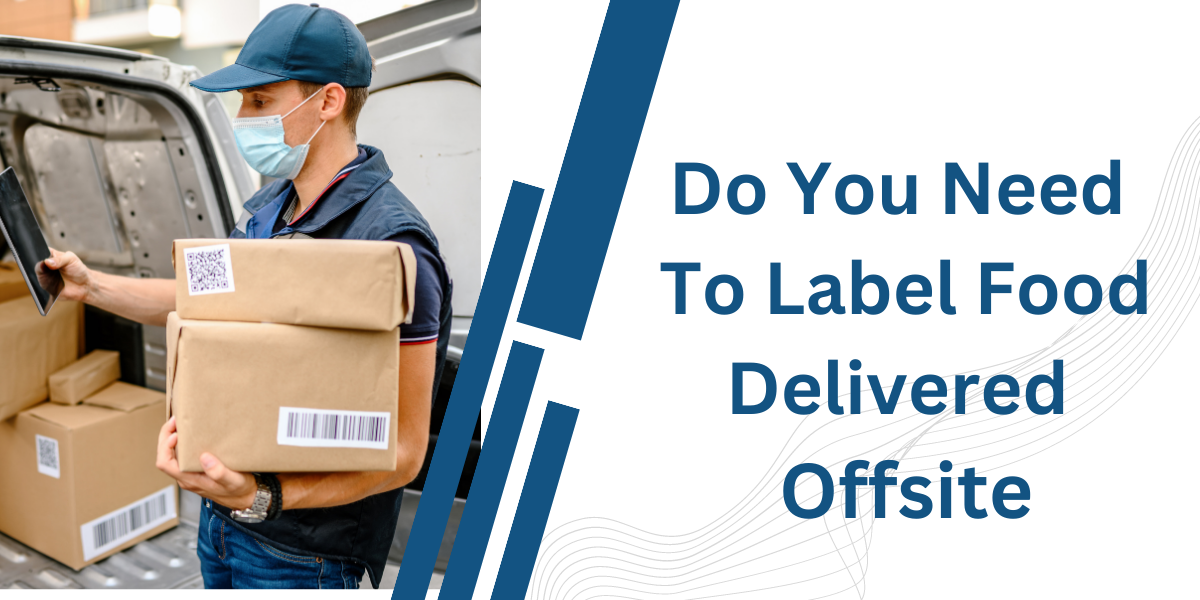Do You Need To Label Food Delivered Offsite
As food delivery services gain popularity, many questions arise regarding the safety and legality of delivering food offsite. One of the most important questions is whether food delivered offsite needs to be labeled.
This question has implications for businesses and consumers, affecting food safety, customer satisfaction, and regulatory compliance. In this article, we will explore the issue of labeling food delivered offsite and provide insights into why it matters.
Understanding Food Labeling
Food labeling is essential for communicating information about food products to consumers. Labeling serves several purposes, such as identifying the contents of the food, providing nutritional information, and warning consumers of potential allergens or harmful ingredients. In the context of offsite food delivery, labeling becomes even more critical as the food is no longer under the direct supervision of the restaurant or food establishment.
Legal Requirements for Labeling Food Delivered Offsite
The Food and Drug Administration (FDA) regulates food labeling requirements in the United States. The FDA requires food businesses to label food products intended for sale or distribution to consumers, including food delivered offsite. Food labeling must include the name of the food, the net weight or volume, the ingredients list, and any allergen information. Failure to comply with these requirements can result in fines, penalties, and legal liability.
Food Safety Concerns
Food safety is a critical issue when it comes to offsite food delivery. Do You Need To Label Food Delivered Offsite Food delivered offsite may be exposed to various environmental factors, such as temperature changes, contamination, or mishandling. Proper labeling can mitigate some risks by providing consumers with essential information about the food’s contents, preparation, and handling instructions. For example, labeling can indicate whether the food needs refrigerated or consumed within a certain time frame.

Customer Satisfaction
In addition to legal requirements and food safety concerns, labeling food delivered offsite can also impact customer satisfaction. Customers who order food for delivery expect a high-quality product that meets their expectations. Proper labeling can help ensure that customers receive the correct order, with accurate ingredient information and special instructions, such as “gluten-free” or “spicy.” This level of detail can make a big difference in customer satisfaction and loyalty.
Best Practices for Labeling Food Delivered Offsite
To ensure compliance with regulatory requirements and address food safety and customer satisfaction concerns, businesses should follow best practices for labeling food delivered offsite. Some key practices include:
- Labeling all food products intended for offsite delivery, including drinks and desserts.
- Including accurate information about the food’s contents, ingredients, allergens, and special instructions.
- Ensuring that labels are legible and visible, even after delivery.
- Using food-grade labels and packaging resistant to moisture, tearing, and other hazards.
- Training employees on proper labeling procedures and food safety protocols.
Conclusion
In conclusion, labeling food delivered offsite is critical for ensuring food safety, regulatory compliance, and customer satisfaction. Businesses can mitigate risks and build trust with their customers by providing accurate information about the food’s contents, ingredients, and handling instructions.
By following best practices for labeling food delivered offsite, businesses can demonstrate their commitment to quality and safety and maintain a competitive advantage in the growing food delivery market.











